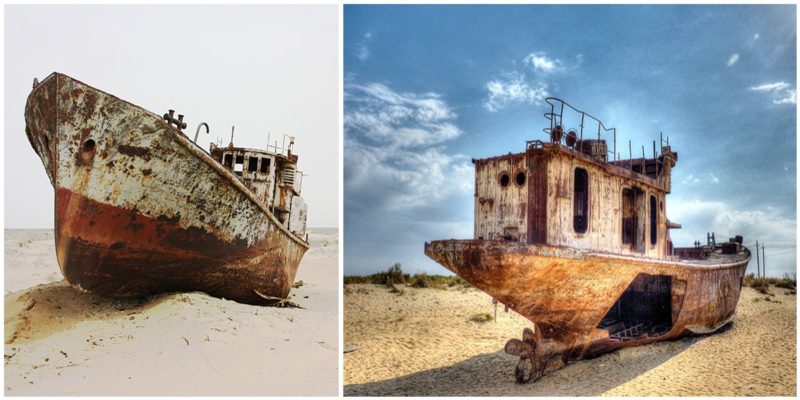Mo‘ynoq also spelled as Muynak and Moynaq, was once a thriving sea port city on the Aral Sea in western Uzbekistan, now home to only a few thousand residents at most.
Its population has been declining precipitously since the 1980s due to the recession of the Aral Sea and Mo’ynoq harbor has turned into a graveyard of ships.





Fishing had always been part of the economy of the region, and Mo‘ynoq became a center of industrial fishing and canning. In 1960, its fishing industry was bringing up to 60,000 tons of fish.
However, in the late 1960s, the volume of chemical fertilizers used in the fields of the Republic of Uzbekistan was 7 times larger than in the rest of the USSR.



Uzbekistan was a major cotton producer for the Soviet Union, and it was decided to construct irrigation stations and reservoirs in Karakum and Big Fergana to increase the production of cotton. The rivers that fed the sea were diverted into irrigation, which caused the sea to slowly evaporate. Waterfront properties like Mo’ynoq turned to dry dust, and many boat owners failed to transport their boats before the waters receded, leaving behind these monuments to the city’s former glory.




In just 34 years, from 1961 to 1995, the sea level dropped by 17 meters, and the shoreline receded by 100 – 150 km.
The ships that sailed the waters of Aral are now abandoned and buried in the sand, sinking into oblivion, creating a sight of a terrifying post-apocalyptic machinery graveyard. 33% of the seabed got exposed to the massive air stream in the area, which still continues spreading up to 100 million tons of dust and salt from the bottom of the long gone sea.
